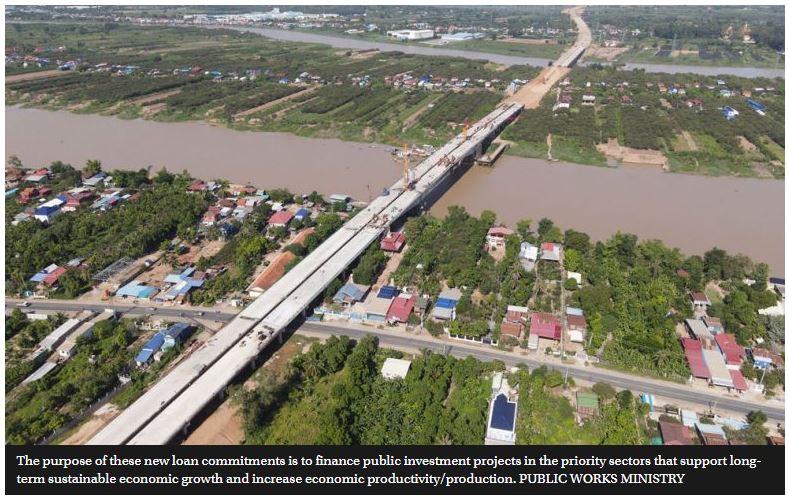Cambodia: Debt ceiling still provides space for development
Cambodia’s public debt is still relatively low as a percentage of gross domestic product (GDP), at nearly 25 per cent, compared to the 40-per-cent threshold, affording the government ample fiscal space to borrow to develop the country, experts have said.
“As of [March 31], including the old debt, the [government] has a total public debt stock of $9.81 billion, which is public external debt comprising 68 per cent from Bilateral Developing Partners [DP] and 32 per cent from Multilateral DPs,” the Ministry of Economy and Finance said in a bulletin.
“In [the first quarter of this year], the [government] has signed new concessional loan with DPs in the total amount of $317.24 million equivalent to SDR 228.21 million accounting for 14 per cent of the ceiling permitted by Law – SDR 1.6 billion – of which 52 per cent is signed with Bilateral DPs and 48 per cent is signed with Multilateral DPs.
“Borrowing in [January-March was] better compared to [the first quarter of last year] which had no new loan signed,” said the Cambodia Public Debt Statistical Bulletin, released early this month.
“Overall, all the loans are highly concessional with an average grant element of around 50 per cent. The purpose of these new loan commitments is to finance public investment projects in the priority sectors that support long-term sustainable economic growth and increase economic productivity/production.
“The preliminary result of the Debt Sustainability Analysis [DSA] shows that despite being impacted by the widespread [pandemic] of Covid-19 and other external factors, Cambodia’s public debt situation continues to remain ‘sustainable’ and ‘low risk’ of debt distress.
“All the key debt indicators in 2022 are well below the thresholds, of which the main debt indicator, the Present Value of Public and Publicly Guaranteed Debt to GDP, is at 24.9 per cent compared to the 40 per cent threshold,” the bulletin added.
Mekong Strategic Partners (MSP) managing partner Stephen Higgins told The Post on June 15 that the Kingdom was in a “great position” from a public debt management perspective. “Not only is it relatively low compared to neighbours, but it is low on a global basis.
“Cambodia’s debt is also largely on concessional terms, so while the amount of debt is low compared to peers, the cost of servicing it is even lower with fairly negligible interest costs,” he said.
Anthony Galliano, the group CEO of financial services firm Cambodian Investment Management Co Ltd, told The Post on June 15 that the Kingdom has moved swiftly moved away from a donor-based financing for development in the last decade to a bona fide sovereign borrower.
“The government has done an excellent job in managing debt, with debt to GDP the second lowest in ASEAN, only to oil-rich Brunei,” he said.
Armed with the Public Debt Management Strategy 2019-2023 to handle public debt and investment, and “executing effectively and stringently following its five key principles”, Cambodia is a “creditable sovereign borrower” with a country risk rating of B.
“Developing economies are recording large increases in fiscal deficits, the global debt to GDP ratio by developed countries is approximately 105 per cent in 2021, emerging markets are to 63 per cent, Cambodia is well below,” Galliano added.
The bulletin said that in January-March, the government “disbursed $529.79 million from the existing concessional loan, of which 47 per cent is from the bilateral DPs, and 53 per cent is from the multilateral DPs.
“Thirty-two per cent of the disbursed amount is used for infrastructure and 68 per cent for other priority sectors: non-infrastructure. The disbursement in [the first quarter] increased by approximately 21 per cent compared to the same period last year,” it added.
Source: https://www.phnompenhpost.com/business/debt-ceiling-still-provides-space-development


 English
English




